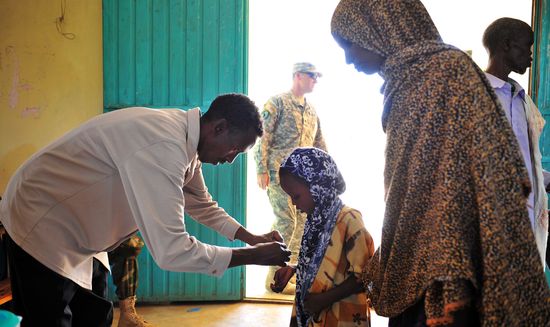Spotlight on Izumi: A Grantmaker With An Eye on Neglected Tropical Diseases
/
The term "neglected tropical diseases" implies that they are basically ignored by the global health community. But it’s not that simple. Neglected tropical diseases, or NTDs, are often so named because they are referred to as “disablers” rather than “killers.” Seems a rather morbid distinction.
According to the WHO, NTDs “are a diverse group of communicable diseases that prevail in tropical and subtropical conditions in 149 counties and affect more than one billion people.” Unsurprisingly, least-developed countries carry the highest disease burdens and suffer billions of dollars in economic losses each year due to NTDs. The economies of poor countries can hardly afford to lose that money, yet, here we are.
A major funder in this field is, of course, the Gates Foundation, which has dedicated over $1 billion since 1998 to combat all manner of NTDs by supporting work in treatments, mass drug administration, vaccine research, vector control, and public health surveillance. But Gates is not the only player in this field. And while the foundation is doing incredible work here, it’s important to keep in mind that other funders also operate in this space—like the Izumi Foundation.
Izumi is definitely an under-the-radar funder. Founded in 1998 by the Shinnyo-en Buddhist order, the Massachusetts-based Izumi grants to organizations with promising, yet practical solutions to decreasing infectious disease occurrences in high-burden countries. Although the foundation periodically reviews its geographic areas of focus, it’s currently concentrating its grantmaking on Africa, Latin America and the Caribbean.
Related: Izumi Foundation: Grants for Global Health
Overall, Izumi awards grants to groups that focus on diseases with high morbidity and mortality rates such as diarrhea, malaria, HIV/AIDS, tuberculosis, measles, and pneumonia. In the NTD space, Izumi is pretty equal opportunity and appears to be open to funding projects related to any NTDs, even the more obscure ones. Here are two quick examples of what Izumi’s NTD grantmaking looks like:
- Northeastern University in Boston, Massachusetts, was awarded a two-year, $150,000 grant for its integrated community intervention and evaluation mode for neglected diseases, mainly leishmaniasis, in East Pokot District, Kenya. These interventions include community mobile clinics to screen for leishmaniasis and other diseases as well as increased training and education regarding disease management and prevention. Funds are also dedicated to strengthening the services and infrastructure at the Chemolingot Sub-County Hospital.
- Footwork, the International Podoconiosis Initiative of Silver Spring, Maryland, also received a two-year, $100,000 grant in support of its work in the prevention and treatment of podoconoiosis in Gondar, Ehtiopia. The goal of this program is to treat some 3,000 patients who did not previously have access to such treatments. Izumi estimates that around 15,000 family members will be positively impacted by the program.
In case you're wondering, leishmaniasis is a parasitic disease spread by sandflies that can horribly disfigure those infected. Podoconoiosis produces symptoms that are almost as ghastly. It's a form of elephantiasis or swelling of the lower leg triggered by prolonged exposure to irritant minerals in red clay soils.
Izumi's funding is a reminder that NTDs aren't as neglected as they once were by the international community.
Tackling NTDs is an objective of the U.N.'s Millennium Development Goals (MDGs) and remains a target for action for the Sustainable Development Goals (SDGs). As well, country governments and government agencies have mounted global campaigns to bring an end to NTDs and the WHO has laid out multiple blueprints for interventions, preventions, elimination, and eradication of NTDs.
That said, even the WHO admits that if any of those goals are to be achieved, donors, pharmaceutical companies, NGOs, philanthropists, and academic institutions “must increase their commitments to overcoming NTDs.” Although the field of NTDs wouldn’t necessarily be considered an uncrowded one in the NGO sector, it’s not necessarily one of the more populated spaces either.
Perhaps that will change as more funders learn about the significant economic returns that are possible here. For example, the Global Programme to Eliminate Lymphatic Filariasis conducted a study that found that during the first eight years of the program, every $1 spent resulted in a $20 to $60 return on investment. Of course, this is only one example of a single NTD, but it’s promising and demonstrates that combating NTDs is connected to many different global health and development challenges.








